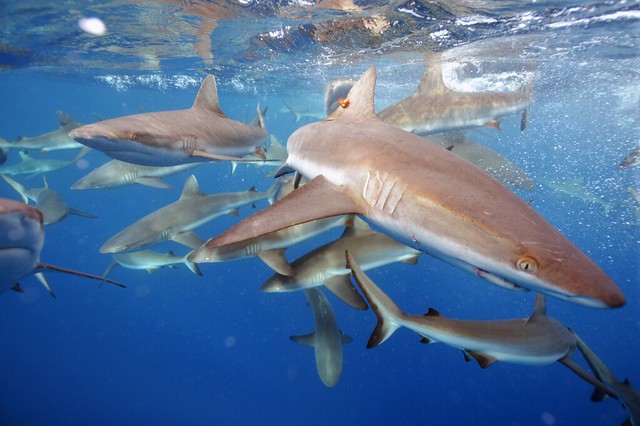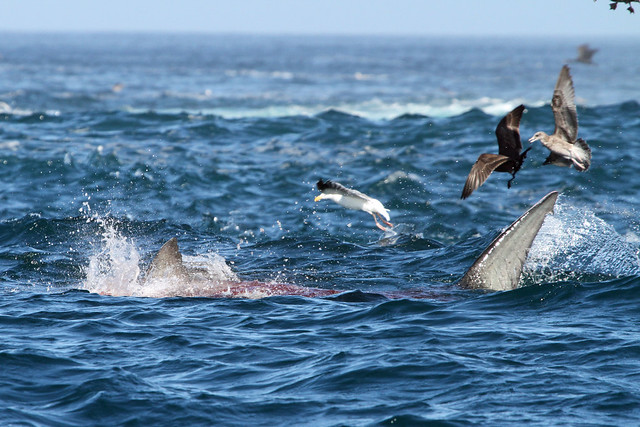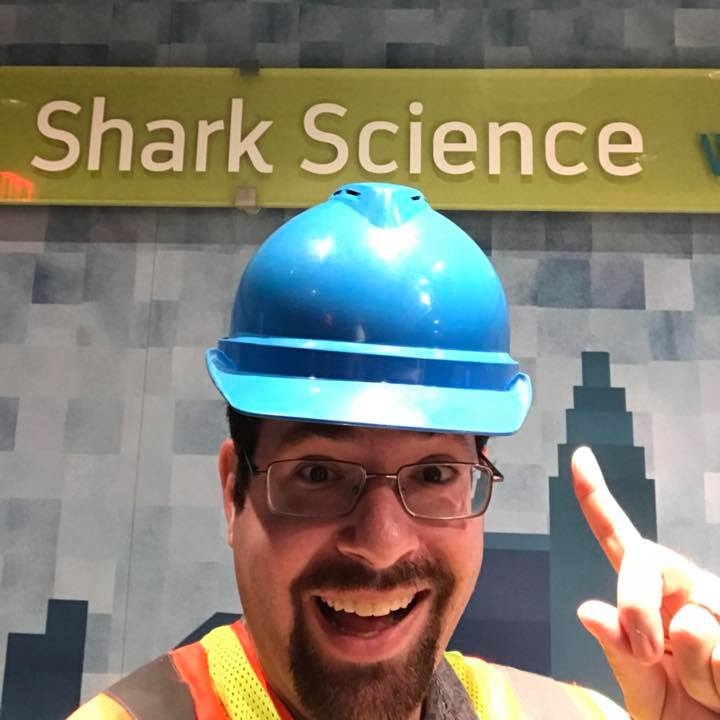For decades scientists and environmentalists have been sounding the alarm about shark population declines and calling for new and stronger laws to help sharks and related elasmobranch species recover from overfishing.
While globally many shark populations are still imperiled, efforts are starting to pay off as science-based management is leading to some shark population recoveries. Great white sharks on both coasts of the United States are starting to recover, as are leopard and soupfin sharks off the West Coast and seven species of sharks off the Southeast, for example.
In what has in some places become a “dog that caught the car moment,” many are wondering what we should do now that we’re starting to succeed. Or, as the title of a new paper published in the journal Environmental Conservation on this topic boldly asks, “Are we ready for elasmobranch conservation success?”
Shark conservationists have long touted the ecological benefits of healthy shark populations — predators help keep the food web in balance by eating sick and weak members of prey species — but the success of shark conservation means, quite simply, that there are more sharks around. That’s great for the health of the ocean, but it can lead to new conflicts if we don’t properly plan and prepare. The authors of the Environmental Conservation paper highlight three ways that increased shark populations can lead to new conflicts and suggest ways we can prepare.

Conflict With Fishers
Higher populations of marine predators mean that fishers trying to catch the same prey are having more competition.
“Sharks are consuming fish that are of importance or high value to communities,” says Michelle Heupel, director of the University of Tasmania’s Integrated Marine Observing System and a coauthor of the study. Shark consumption of fish can lower their abundance, leaving less for fishermen to catch. Or sometimes sharks directly “steal” catch from fishermen by consuming fish caught in fishing gear.
Another new study in the journal Ecology and Evolution has shown that shark population recoveries result in declines in the population of mid-level predatory fish such as those commonly fished by humans like snappers and groupers. Researchers found that “The eradication of illegal fishing allowed numbers of sharks and other large predatory fishes to rebound, which in turn resulted in lower numbers of smaller predatory fishes due to an increase in predation pressure,” says Conrad Speed, a postdoctoral researcher at the Australian Institute of Marine Science and the lead author of that study. “In other words, the recovery of sharks and large fish suppressed the abundance of smaller predatory species.”
Speed noted that this change in ecosystem structure represents a success in terms of ecological restoration, but it is undeniably a major change in the type and number of fish.
More Shark Bites
While the risk of a shark bite remains extremely low, simple math indicates that having more sharks in more places means that the risk will likely go up — especially as recovering shark populations move into areas where there haven’t been large sharks in decades.
“In general, people are happy to see wildlife conserved when it doesn’t inconvenience them in any way, and feelings are more mixed when we have to share space with wildlife and assume the risks that can entail,” says Catherine MacDonald, a lecturer in marine conservation at the University of Miami and the director of research and education organization Field School, with whom I’ve collaborated on several past research projects involving human perception of sharks.
For example, in Cape Cod, Massachusetts, great white shark populations are beginning to recover, but Cynthia Wigren, CEO of the Atlantic White Shark Conservancy, says that even though it’s a conservation success story, they aren’t popping the champagne cork just yet.
In an act of good will toward the species, beachgoers there helped rescue a stranded great white in 2015 and the chance to see sharks is even attracting some tourists to the area, but after a swimmer died in 2018 from a shark bite on the Cape, public feelings are mixed.
“People no longer feel like they can enter the water without thinking about sharks and the need for heightened awareness about safety,” Wigren says. “For some in the community, having to change their behavior when recreating in the ocean is a hard pill to swallow. We believe that conflict related to negative human-white shark interactions is the greatest threat to the continued conservation of the species.”
And then there are also economic considerations, too. While there’s a financial value to be gained from sharks aiding diving and wildlife tourism, preventing negative interactions between sharks and humans also takes resources. Money is often spent on “spotting planes, beach closures, boat patrols, and netting or fishing to reduce the size of local shark populations,” says MacDonald.
Protected Species at Risk
While the risk of humans being bit by sharks remains low, other species may not be as lucky.

More sharks means more sharks eating other animals, and sometimes those other animals are also threatened species we’re trying to manage and recover. “For example, increased shark predation on seals based on increased numbers of sharks can cause concern for the status of seal populations, ultimately leading to conflicts over protection of both sharks and seals,” Heupel says.
Sea otters in California are also threatened by rebounding populations of white sharks, although the otters are usually an accidental victim, as the sharks prefer meatier prey.
Sometimes sharks and their relatives are also the victims of this same problem. In Canada’s Gulf of St. Lawrence, recent research finds that a unique population of winter skates, which may represent a yet-unidentified new species, is now at risk of localized extinction because the nearby population of grey seals has recovered.
Beyond Conservation
For good reason, most conservation programs focus on stopping the decline and promoting the recovery of imperiled species, and don’t necessarily have the time or resources to think about what happens next.
“The implications of recovery happen after the initial goals are achieved, so in some ways they’re beyond the scope of the conservation program,” Heupel says. “However, if we don’t consider the factors around recovery from end to end, we may overlook competing or complicating factors that arise after conservation goals are achieved and which have the capacity to undermine conservation efforts.”
Fortunately increased public education to help people know what’s happening in their environment, and understand how to safely use the ocean as things change can go a long way toward making conservation truly successful.
“Proactively communicating with the public and stakeholders about the objectives of conservation efforts and hearing their perspective is key to formulating decisions that can suit as many needs and priorities as possible to avoid scenarios that undermine conservation efforts,” says Heupel.
Wigren agrees. “Our role is to increase knowledge and understanding of white sharks through research and to share that information with the public and beach managers,” she says. “Our hope is that informed decisions will be made based on data and facts rather than fear, and that the conservation of the species will remain a priority.”
It’s important to consider that the success of some conservation programs may lead to complications in the future, but that doesn’t mean that conservation isn’t good.
“We’re not claiming that recovering shark populations is a bad thing, despite some [potential] negative impacts,” says John Carlson, a research biologist with NOAA Fisheries and a coauthor on the Environmental Conservation paper. “But we do want the public to recognize that alternative management policies may be needed in the future.”
With more sharks around, we’re going to need to change how we fish, how we spend time at the coast for recreation and how we manage other species — all of which will require public education efforts.
And this gets to the heart of why conservation efforts are so important in the first place. The real question, MacDonald says, comes down to “whether we’re willing to accept some inconvenience and risk in order to live on a wild planet where other species can thrive.”
![]()



1 thought on “Are We Ready for Shark Conservation to Succeed?”
Comments are closed.